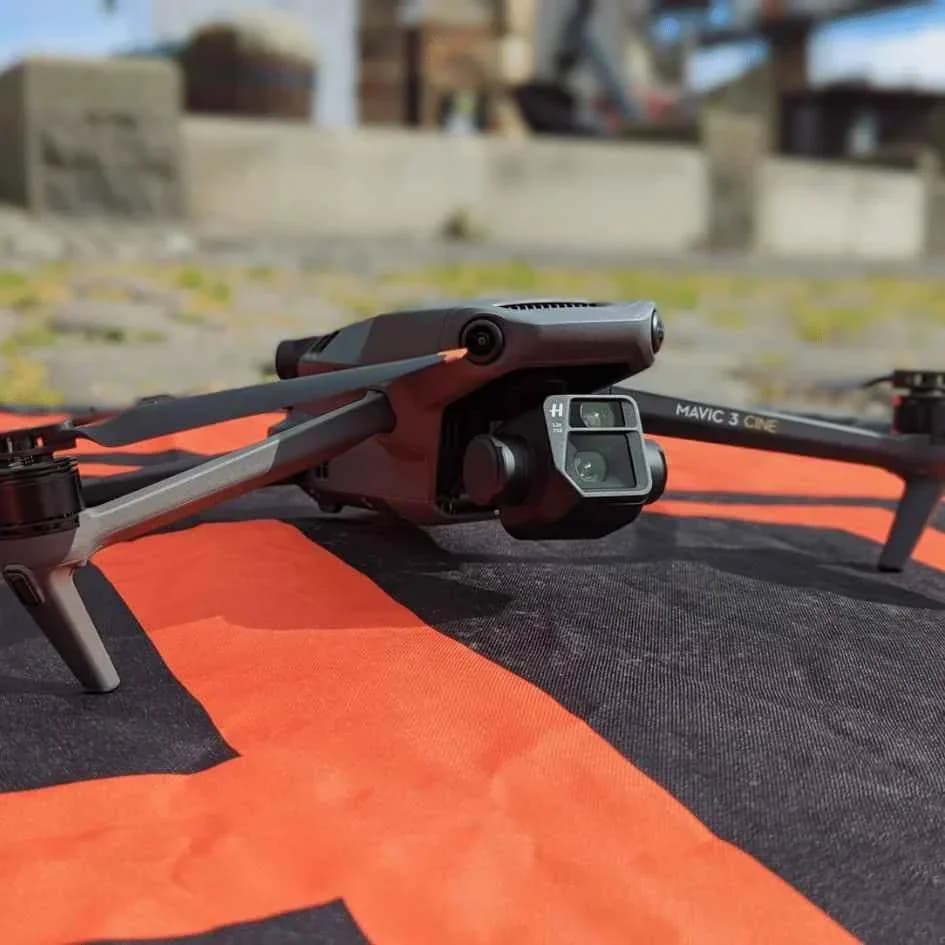
The drone you're seeing almost certainly isn't following you. As a commercially licensed drone pilot, my focus is always on the mission—be it a drone roof inspection or a drone lidar survey—not the people on the ground.
With a maximum battery life of around 25 minutes and a strict legal requirement to keep the drone within my line of sight, sustained, secretive following is practically impossible.
Plus, from a typical flight altitude of 150-400 feet, you're little more than a tiny, unidentifiable figure in my camera's wide-angle view.
Whether you're worried about your privacy or just curious about the drone buzzing overhead, this guide will give you a professional's inside perspective on how to tell the difference between legitimate work and a genuine cause for concern.
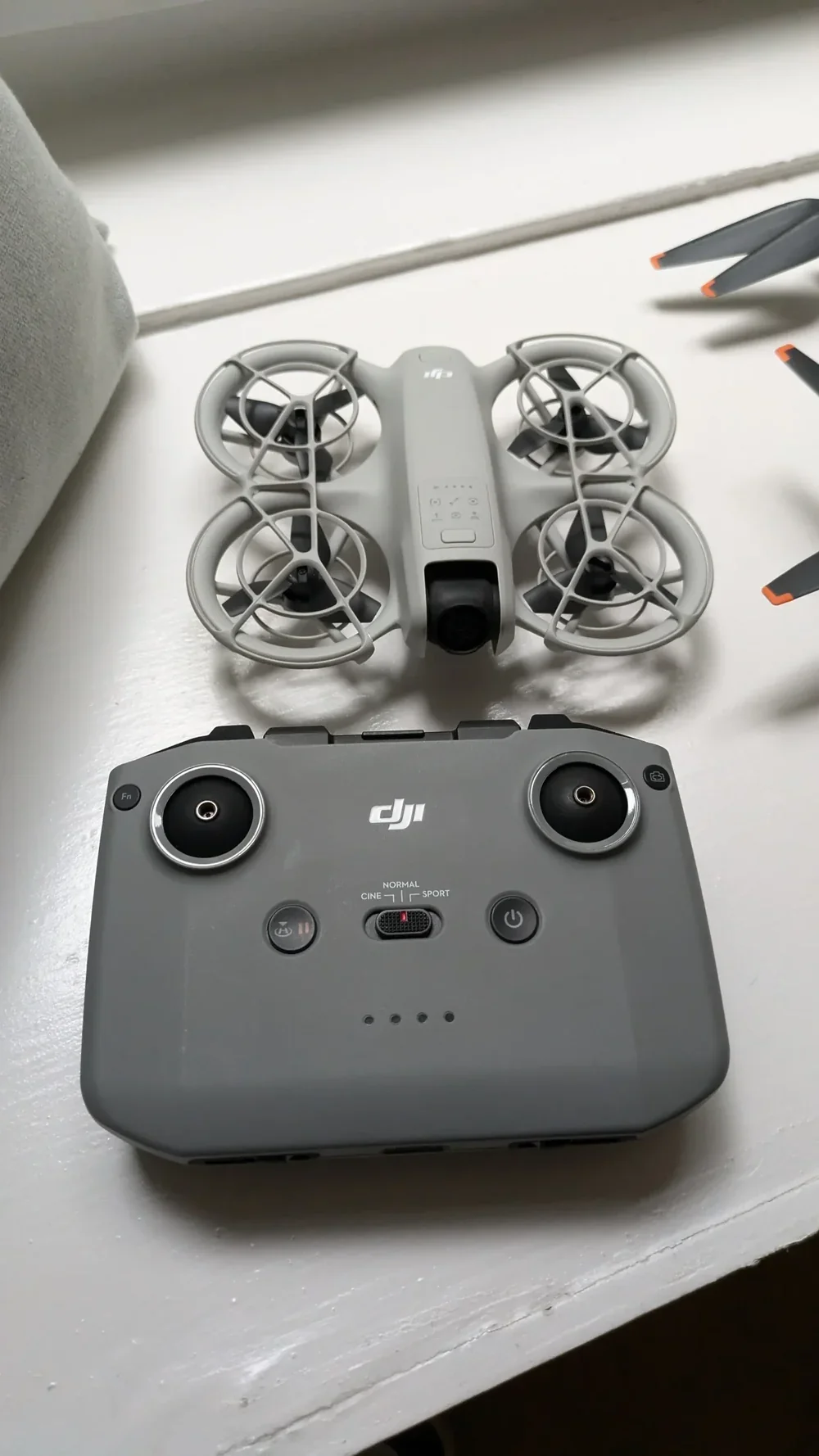
30 Second Summary
- Commercial drone photography or filming may explain drone presence, especially in visually interesting areas
- Law enforcement may use drones for surveillance or monitoring of specific areas
- Infrastructure inspectors often use drones to examine utilities, buildings, or roads in residential areas
- Recurring drone presence with tracking behavior could indicate unauthorized surveillance or stalking
- Mapping services and real estate companies frequently use drones to capture area footage for their databases
Many drones are used for hobby flying or legitimate filming
While drones have become increasingly common, the vast majority aren't following you personally. From 150 feet up, which is a common altitude for drone survey work, you are not that visible.
It’s far more likely the drone is being operated by someone like me doing drone surveys, or a hobbyist simply enjoying a flight. We're often in parks, scenic areas, or open spaces where you might happen to be.
It’s also important to remember the practical limitations we work with. My drone’s batteries last about 25 minutes at most, so long-term following just isn't feasible.
Legally, I also have to keep the drone within my visual line of sight at all times. This means if you can see a drone, the drone operator is nearby and should be visible to you, too. They aren't hiding miles away; they're likely just focused on their task, whether it's inspecting a roof, filming a property for sale, or capturing a beautiful landscape.
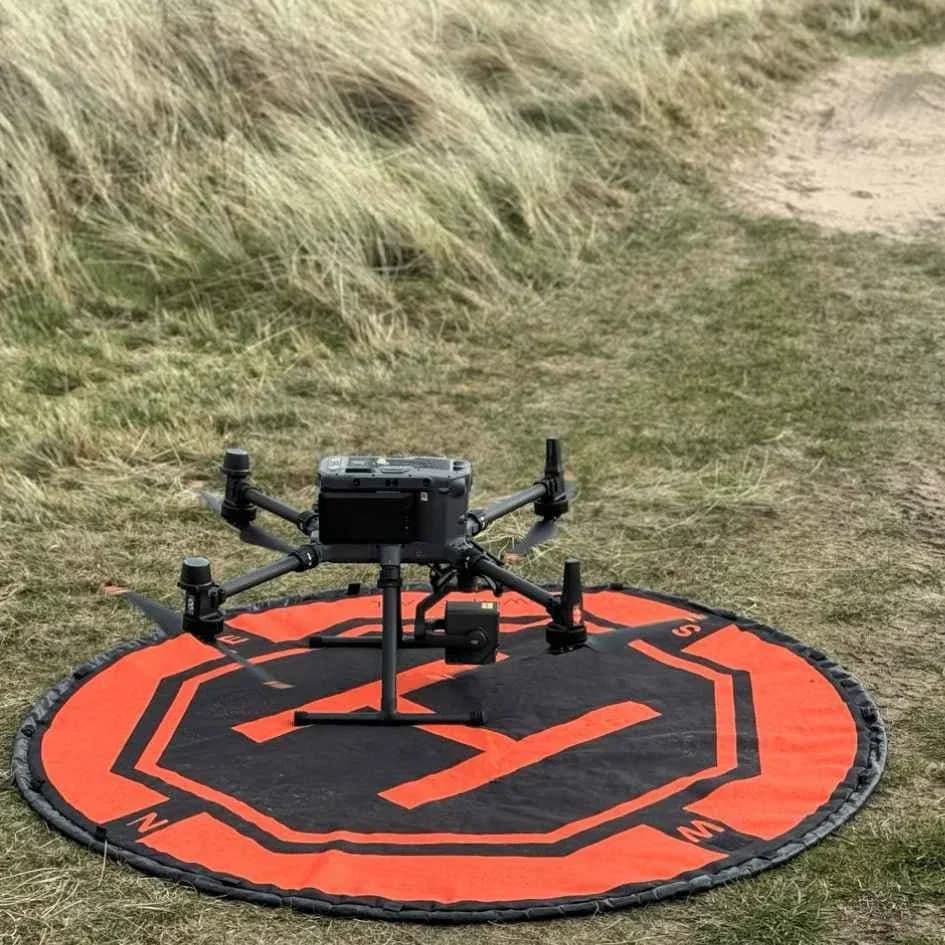
UK drone laws restrict how close drones can fly to people
In the UK, strict regulations govern how close drones can fly to uninvolved people and property. The Civil Aviation Authority (CAA) requires drone operators to maintain a minimum horizontal distance of 50 meters from people if the drone weighs over 250g. As a drone pilot, I’m constantly aware of these separation distances.
Crucially, we are legally not allowed to fly directly over uninvolved people, and flying over crowds is completely forbidden.
A good principle we often follow is the drone 1:1 distance rule: if the drone is 100 feet high, it must be at least 100 feet away from you horizontally. If you're seeing a drone hovering very close, it might be breaking these laws, though it's also possible the drone operator has special permissions for commercial work.
The drone laws become even stricter in congested areas. A key rule we always follow is maintaining that visual line of sight—if I can’t see the drone, I can't legally fly it. So, if a drone feels close, take a moment to look around for the drone pilot. They are legally required to be in the vicinity.
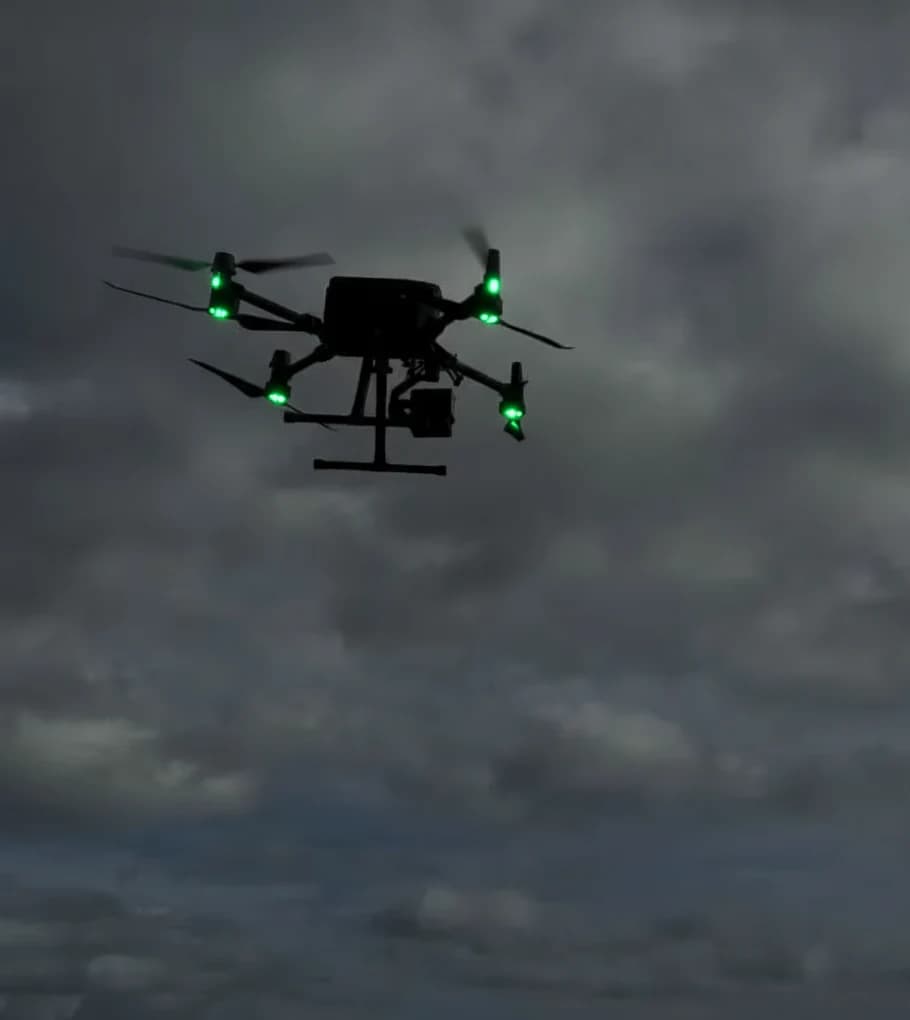
Repeated hovering or tracking suggests intentional following
While it’s rare, if you’ve ruled out the more common scenarios, three key behaviors might distinguish random sightings from intentional following.
First, a drone that repeatedly hovers near you across multiple locations. Second, a drone that maintains a consistent distance, adjusting its position when you move. Third, a drone that appears at predictable times in your routine.
If you notice these patterns, document each incident with photos, videos, and detailed notes including times and locations. This evidence becomes crucial if you need to report the situation, as it helps establish a pattern of intentional following rather than the far more likely random encounters.
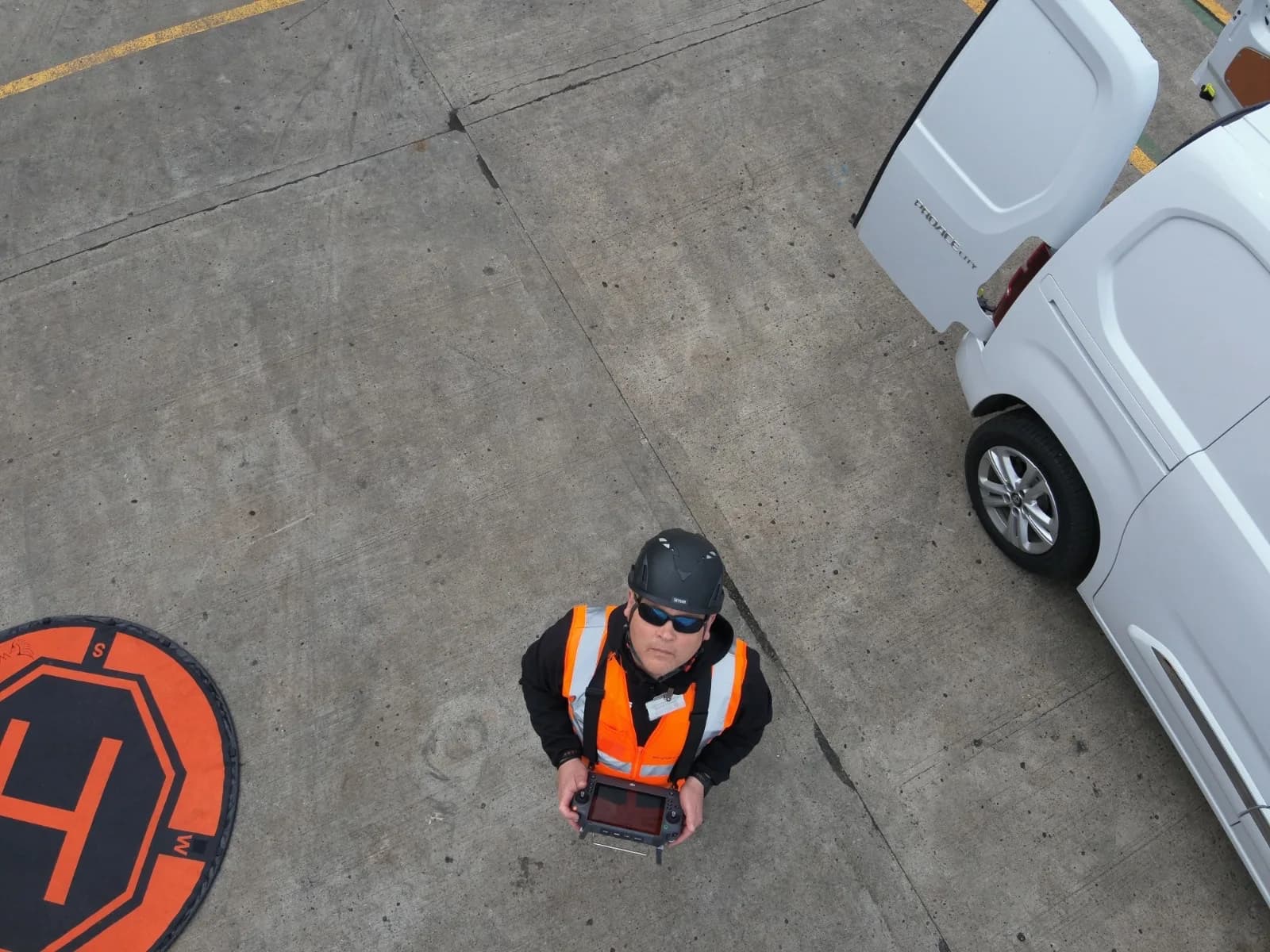
Individuals have legal protection against drone-related privacy invasion
Once you've identified a drone following you, it's important to understand your legal rights. Most jurisdictions prohibit harassment and stalking, which can apply to drone surveillance. You're legally protected against intrusive monitoring that violates reasonable expectations of privacy.
As a professional drone pilot, respecting people’s privacy isn’t just a rule; it’s a core part of the job.
If a drone hovers near your private property in a way that feels intrusive, you can report it to local law enforcement. Many places have specific drone privacy laws. Remember, while you have protections, never attempt to disable or shoot down a drone yourself—it's incredibly dangerous and illegal.
Suspicious or intrusive drone activity can be reported to police or the CAA.
Anyone experiencing persistent drone monitoring can take formal action by reporting the activity to local police or the Civil Aviation Authority (CAA). When filing a report, provide specific details about the drone's appearance, flight pattern, and approximate times of sightings.
If possible, capture photo or video evidence to strengthen your case. Police can investigate potential harassment or privacy violations, while the CAA enforces drone operation regulations.
In the UK, the CAA's online reporting form lets you document unsafe or illegal drone use. Don't confront drone operators directly; let authorities handle the investigation.
Frequently Asked Questions
Can I Legally Disable or Shoot Down a Drone Following Me?
No, you can't legally shoot down or disable a drone. Please don't ever try. As a drone pilot, I can tell you that not only is it a crime in the UK (potentially criminal damage), but it's also extremely dangerous. A falling drone can cause serious injury or property damage. The safest and most effective action is to contact local law enforcement.
What Technology Can Detect if a Drone Is Recording Me?
You can detect recording drones with several technologies. RF scanners identify drone control signals, while acoustic sensors detect their distinctive sounds. Radar systems spot drones in your vicinity, and camera-based systems with AI can visually identify them. More advanced options include drone detection apps for smartphones and specialized counter-drone systems that alert you when a drone's camera might be pointed your way.
How High Can Drones Legally Fly Over Private Property?
In the UK, drones can legally fly up to 400 feet (120 metres). From that height, I can assure you that people on the ground are barely distinguishable. We can see shapes and figures, but not individuals in any detail. While there's no "no-fly zone" over private land for that airspace, drone operators must always follow CAA regulations. If you're concerned about privacy, contact the authorities.
Can I Sue Drone Operators for Emotional Distress?
Yes, you can sue for emotional distress, but you'll need to prove intentional and harassing behavior. Speaking from experience, professional drone pilots are trained to be acutely aware of the public and avoid causing distress. We actively work to fly discreetly and safely. If you believe someone is acting maliciously, document everything and consult with a legal professional who specializes in privacy law.
How Do I Identify the Drone's Owner if It's Following Me?
To identify a drone's owner, report it to local police with as much detail as possible. Note the drone's size, shape, and color. If you're in a residential area, you could ask neighbors. Remember, because of the line-of-sight rule, the drone operator will be somewhere nearby. Often, a polite conversation can clear up a misunderstanding, but if you feel unsafe, contacting the authorities is the right call.
Ensure Your Aerial Project is Safe, Legal, and Professional
As we've discussed, professional drone operations are bound by strict safety and privacy regulations. The best way to avoid causing public concern and ensure your project complies with the law is to use a vetted, certified drone pilot. That's precisely why HireDronePilot exists.
We connect businesses with verified professional drone pilots for hire, all of whom hold the necessary CAA permissions and GVC qualifications to operate safely and legally. As the UK's premier managed marketplace, we streamline drone services through competitive bidding, ensuring quality, compliance, and value for every aerial project across the United Kingdom.
Whether you need aerial photography, lidar surveys, or infrastructure inspections, you can find the right expert on our platform.
For your next aerial project, ensure it's done right. Visit HireDronePilot to hire a true professional and guarantee your work is safe, legal, and respectful of public privacy.
About the Author

Written by
Peter Leslie
Peter Leslie is a CAA-approved commercial drone pilot with 10+ years experience and over 10,000 flight hours. He holds the GVC and A2 CofC drone licences with full CAA Operational Authorisation. Peter is a member of ARPAS-UK, the UK's non-profit trade association for the drone industry. He founded HireDronePilot to connect UK businesses with qualified, insured drone operators.
Looking for More Drone Work?
Join the UK's leading network of professional drone pilots and grow your business.
Open Access
Bid on any job - all jobs open to all pilots
Grow Revenue
Access high-value commercial projects
Stay Busy
Fill your schedule with regular work
Related Articles

Our Drone Survey Service In Stirling, Scotland
Bringing you Stirling drone survey data from areas no one else can fly.

How Much Does A Drone LiDAR Survey Cost
Forecasting your drone LiDAR survey cost requires understanding what's hidden beyond the initial quote.

Step By Step Process Of Drone LiDAR Survey
Next, discover the crucial post-flight steps that determine your survey's success.
